OM# Documentation
Reading SDIF data
The main function to extract SDIF data is getsdifdata. Using information gathered about the contents of the file, this function can be parameterized with optional/keyword inputs to target specific streams, frames, matrices, and eventually fields or ranges of data within a given matrix.
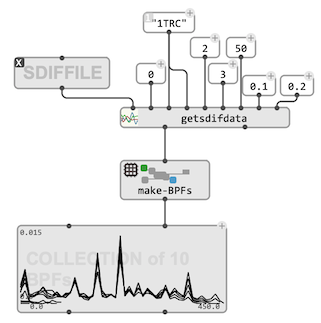
As SDIFFRAME objects
getsdifframes returns a list of SDIFFRAME objects. The optional function parameters allow to target specific streams, frame types of time ranges.
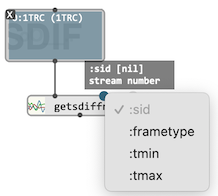
SDIFFRAMEobjects can be further processed in OM# programs, written in new SDIF files or used/visualized in aDATA-TRACKcontainer.
Direct conversion tools
Some utility functions facilitate the reading and conversion of the most common types of SDIF data.

BPF
sdif->bpf converts a targeted field in a stream of frames and matrices into a BPF object. This is usually adapted and useful when the matrix has one dimension (one single value per field).
By default, the function looks for fundamental frequency data, but all parameters can be set via optional/keyword inputs and adjusted to read other or more tragetted values.
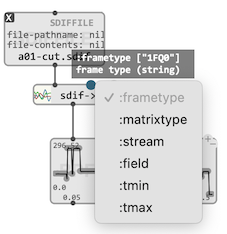
Markers
sdif->markers returns a simple list of times. Here again the function defaults to a specific type of data (the frames of type "1MRK" and regardless of the matrix types), but more specific info can be targeted using the box additional inputs.
Partials and chords
The most frequent use of SDIF data in OM# is to import spectral analyses and process it as symbolic data. A number of utilities perform this conversion with different degrees of precsion and abstraction:
getsdifpartialsreturns the more accurate data formatted aspartialstructures.getsdifchordsformats the information a a list of “notes”: a list of pitch (Hz), onset (seconds), duration (seconds), velocity (linear).sdif->chord-seqreturns aCHORD-SEQobject with pitches rounded to midicents, velocities to [0-127], and timing in rounded milliseconds.
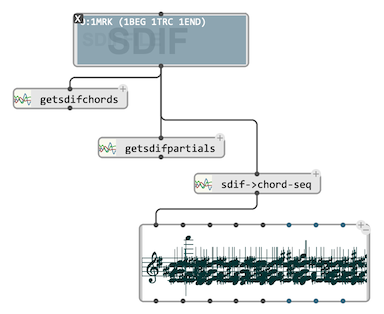
All these functions apply to frames of type "1TRC", or "1HRM" / "1MRK" when they contain "1TRC" matrices (“chord-seq analysis”).
SDIF to Text
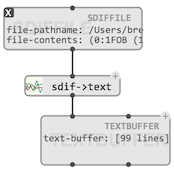
The SDIF to text conversion utility is an alternative to the SDIF editor for getting an exhaustive view of both the meta data and contents of the file.
sdif->text writes a file on the disk, by default located next to the SDIF file and with teh same name (and the “.txt” extension). It returns the path to this file, in such a way that it is possible to simply connect it to a TEXTBUFFER object.